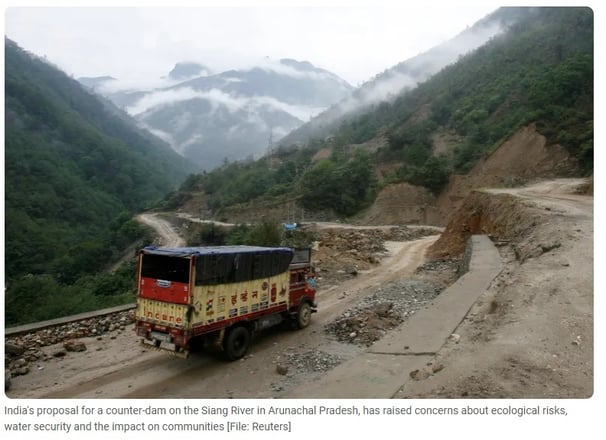Dam for a Dam: Tensions Rise Between India and China Over Himalayan Water Resources
Despite local protests, India is building a giant hydro dam on the Siang River to counter a Chinese dam – the world’s largest – upstream in Tibet. Millions of people in India and Bangladesh could be hurt.
VIRALNEWS


Dam for a Dam: Tensions Rise Between India and China Over Himalayan Water Resources
India and China are on the brink of a potential water conflict as they advance plans to construct massive dams in the fragile Himalayan region, with far-reaching ecological and geopolitical consequences.
In Arunachal Pradesh, India, protesters led by Gegong Jijong and the Siang Indigenous Farmers’ Forum (SIFF) are resisting the $13.2 billion Siang Upper Multipurpose Project, which aims to build India’s largest dam. This project, with a reservoir capacity of nine billion cubic meters and an electricity generation target of 11,000 megawatts, threatens to submerge over 20 villages and uproot thousands of people. Despite resistance, the Indian government insists the dam is vital to counter China’s ambitious $137 billion Medog dam in Tibet, near the Great Bend of the Yarlung Zangbo River (known as the Siang in India).
China’s Medog dam, poised to be the world’s largest, is strategically located just before the river enters India. With a reservoir capable of holding 40 billion cubic meters of water and generating 300 billion kilowatt-hours of electricity annually, the project raises concerns about China’s potential to weaponize water flows, especially during conflicts. India views its own dam as a defensive measure against potential water scarcity or flooding caused by Chinese projects.
However, experts warn that the two mega-dams, situated in an earthquake-prone region with a delicate ecosystem, could result in catastrophic consequences, including intensified floods and destabilized river flows. Downstream countries like Bangladesh are expected to bear the brunt of these developments. The Brahmaputra River, critical for millions in Bangladesh, may face sediment imbalance, riverbank erosion, and disruptions to livelihoods.
The lack of a basin-wide agreement among India, China, and Bangladesh exacerbates the situation. Both India and China are not signatories to the UN’s international watercourses convention, which governs shared freshwater resources. While Bangladesh advocates for collaborative dialogue, analysts are skeptical about China’s willingness to cooperate.
The escalating "dam for a dam" race highlights the growing water tensions in South Asia, amplified by climate change and deteriorating regional relationships. Communities like those in Parong village are determined to resist, despite the overwhelming challenges posed by geopolitics and environmental risks.
